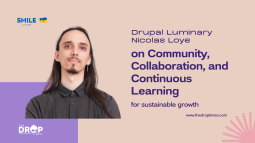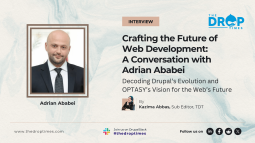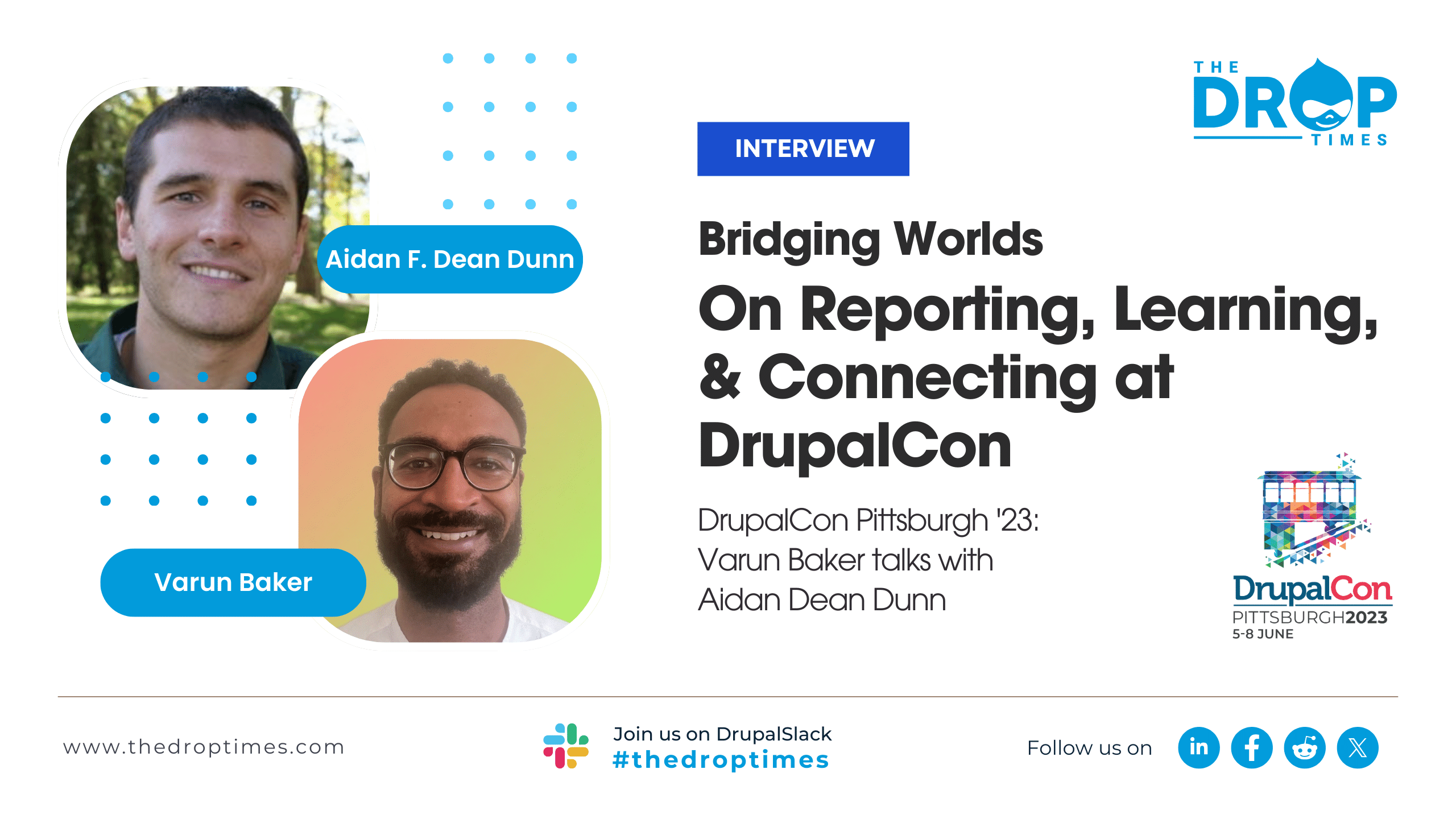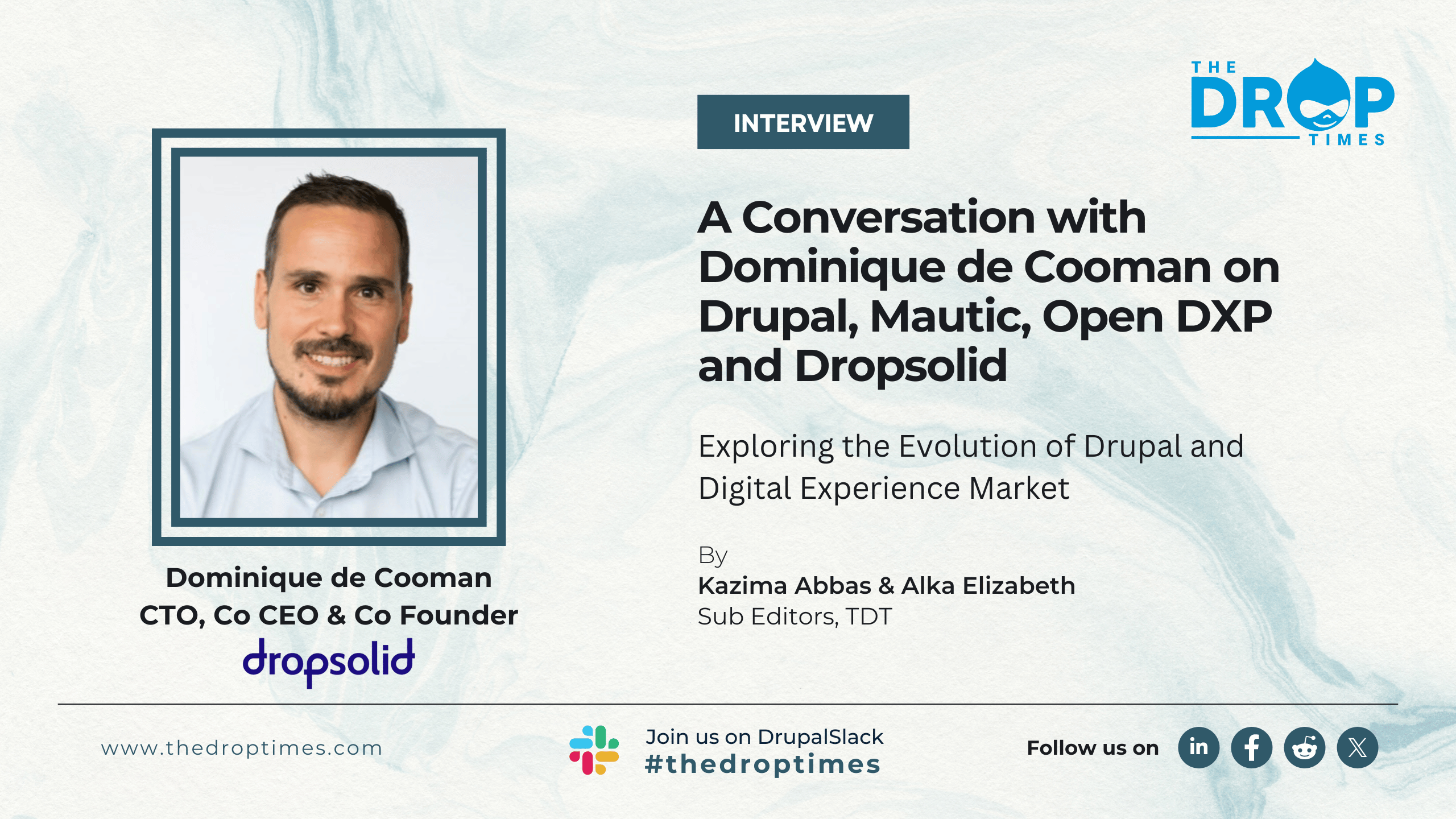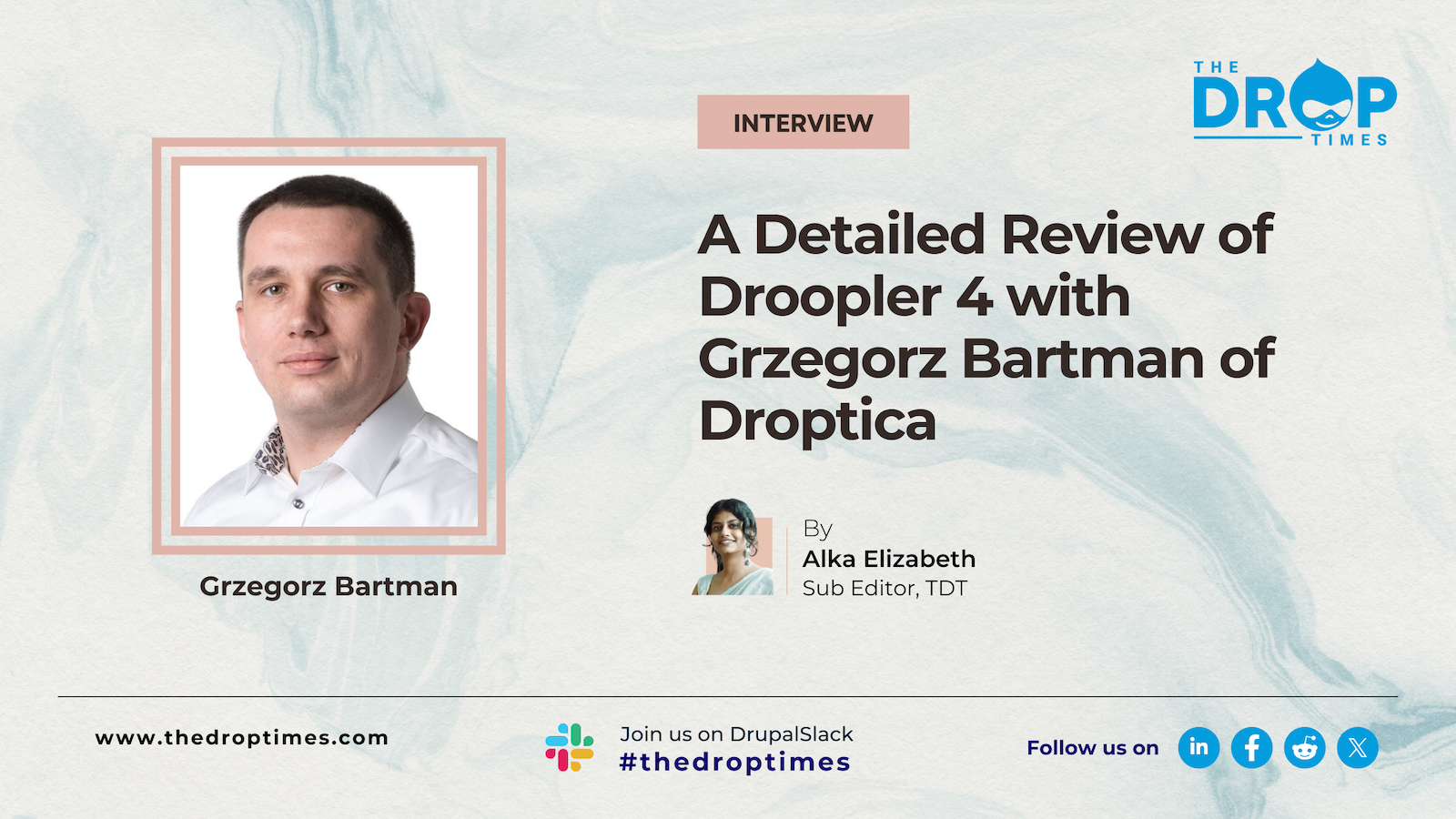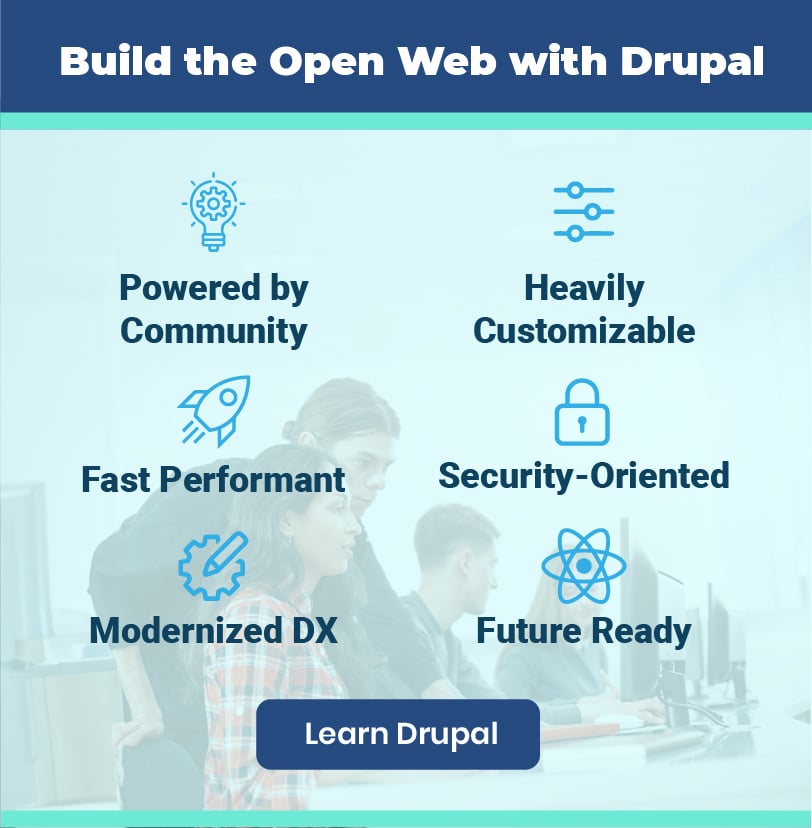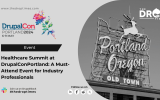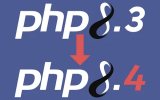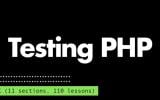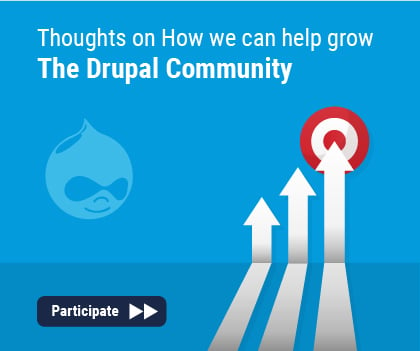Driven by Community; Not by VC Funds: Andrew Berry on What Differentiates Drupal from SaaS Offerings
Andrew Berry is the Director of Technology at Lullabot. Andrew's journey with Drupal and PHP kickstarted with a minor website tweak that snowballed into a deep dive into the Drupal universe.
In this exclusive interview with Kazima Abbas, sub-editor of TheDropTimes, Andrew shares his experiences from Evolve Drupal Toronto, insights into Drupal's unique community spirit, and the story behind his contributions to this dynamic platform.
"Drupal continues to be driven forward by a community of like-minded individuals and organizations. This is a sharp contrast to most other large open-source projects that are driven by VC funding and an "open core" model."
Join us as we unravel the tech tales with Andrew Berry, the maestro steering Drupal into the future.
TDT[1]: Your journey with Drupal and PHP began with a simple student website edit that led to a deeper involvement in the Drupal community. What keeps you passionate about Drupal and its community to this day?
Andrew Berry: I didn't think of it this way until recently, but Drupal being a Digital Public Good really sums it up. Since discovering Drupal in 2006, I've worked with some of the largest commercial enterprises on their Drupal projects. Every one of them has led to some form of contribution to the Drupal community—a contribution the smallest business or non-profit can take advantage of.
I also appreciate how Drupal, by virtue of being open source, is always forced to compete with itself over time and welcomes that competition! This is such a stark contrast to venture-backed SaaS platforms, where lock-in and network effects are usually key strategies of the companies selling those products. The community reflects this value by being open about our successes and challenges and striving together to improve the software for us and our end users.
TDT[2]: Your session at Evolve Drupal Toronto focused on "Architecture Decision Records: Collaborative Decision Making that Sticks." Could you share some key takeaways or insights from your session for those who couldn't attend?
Andrew Berry: For those who missed out on Evolve Drupal, here are some key points:
- Read Michael Nyguard's 2011 introductory post on Architecture Decision Records.
- Come up with a list of decisions your team has already made but aren't written down. For example, at Lullabot, we started documenting our use of the Environment Indicator.
- Start writing! Don't get hung up on tools or processes. You'll figure those out as you work through documenting your organization's "invisible standards."

TDT[3]: Evolve Drupal has been a platform for thought leaders to discuss Drupal's future. How do you think this year's event went, and what were your highlights from the conference?
Andrew Berry: I was really glad to attend the conference this year. It was the first Canadian Drupal event I've attended since 2019. I think they ended up with just north of 150 attendees, which was a great turnout.
I was glad to see Tim Doyle's update on "What's Next for Drupal and the Drupal Association." It was great to hear some concrete goals and more refinement of the message he shared at Drupalcon Pittsburgh. Also, I enjoyed Eric Bremner's and Martin Leblanc's talk on using Pattern Lab at the University of Waterloo. While our team has moved on to Storybook, it was a great reminder of how quality open-source software can still be useful and valuable even when it's not the leader by market share. We need competitors in all open-source software, and who knows—perhaps Patternlab will discover some new technique or pattern simply through continuous use and iteration at organizations like the University of Waterloo.
TDT[4]: You've made significant contributions to Drupal, both in terms of modules and core. Can you tell us about one contribution you're particularly proud of and how it has impacted the Drupal ecosystem?
Andrew Berry: One of my favourites is to Add a variable to disable fixing file permissions during system_requirements() "runtime" checks [#1232572] | Drupal.org. Before that improvement, Drupal would change file permissions, which would completely break version control on the site's directory. It was so painfully annoying! Now, you can turn that off in your settings.development.php or equivalent file for your local environments. Well, "now" is as of 2016 or so. I like to think that change has reduced developer frustration or at least made room for us to be frustrated about new things instead!
TDT[5]: As the Director of Technology at Lullabot, you've worked on projects for various clients, including the State of Massachusetts, DocuSign, and the American Booksellers Association. Could you share a project or challenge that stands out and what you learned from it?
Andrew Berry: Drupal is a great base for a platform as a service, as we built for IndieCommerce at the American Booksellers Association.
To step back, I think the traditional wisdom is that such platforms are better built directly with a framework like Symfony, Laravel, or perhaps NextJS. Drupal makes a lot of architectural choices supporting site builders, but with the assumption that those builders are directly managing a single site. Starting with a framework lets you make those decisions directly without having to work around them.
However, in planning and architecting the re-imagined IndieCommerce platform, we realized that with a few well-chosen constraints, we could build a platform that both met the needs of ABA and their end users while avoiding the pitfalls of common Drupal-isms that led to unhappy site owners. For example, we architected the site so that all configuration was 99% shared between the sites without using Configuration Splits or other similar solutions. Configuration and any forms exposing configuration objects were owned by ABA and never shown to store owners. Instead, we built custom forms outside the configuration system for theme settings, commerce integrations, etc. All content types available on the platform were always present as far as Drupal was concerned, even if they weren't actually visible to all store owners.
This is just one of the decisions we made. Seeing the final platform launched to stores showed me that Drupal and the ecosystem of modules around it are a big advantage, even for these complex SaaS platforms.
TDT[6]: Lullabot is renowned for its expertise in Drupal and digital strategy. Can you tell us more about the type of work Lullabot specializes in and how your role contributes to the company's mission?
Andrew Berry: At Lullabot, we work with organizations where the success of their website is key to the organization's success. That applies across many different industries and verticals, with current clients including organizations in technology, higher education, government, and more. Many of our projects involve not just a single Drupal site but an entire fleet of sites for many departments within an organization.
In my role as Director of Technology, I am responsible for keeping Lullabot up to date on the Drupal and CMS ecosystems, investigating and advising on the best ways to use Drupal and other web-focused technologies, and acting as a lead engineer or project manager as needed on our projects. Over the past several years, that work has led to several building blocks we use on our development projects, including Lullabot's Engineering Values, Architecture Decision Records, and Sponsored Contribution Program. I'm really proud of the work our whole team has done in these areas and how we've been able to find an overlap between Lullabot's mission, our clients' needs, and the Drupal community.
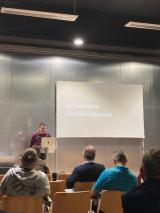
TDT[7]: In the context of architecture decisions and Drupal, how do you see the future evolving, and what trends or changes do you anticipate in the Drupal landscape in the coming years?
Andrew Berry: Everyone in our industry is watching the rapid growth of generative AIs and wondering how they will affect our work.
At the engineering level, I think over the next year, we will start to see generative AI tooling in IDEs that leverages Apple Silicon's Neural Engine. This, in turn, will lead to more demand for similar hardware on Windows and Linux laptops, either through video cards or dedicated AI hardware.
While so much in terms of generative AI tooling is being run server-side today, I think the way providers will reduce their costs will be to push that expensive computation to the edge wherever they can. Developers also face enough latency in their development workflows and will probably prefer local AI assistance. It may be 90% as good as a more robust server-side solution, but it will be faster to respond and guarantee the confidentiality and security of their code.
For Drupal, I think we will see the CMS be most successful for websites where it is important that a human is in the loop reviewing and editing content, even if the first pass is heavily assisted by an AI tool. For example, the incentives and missions of government and higher education organizations require that they post accurate, factual information that is often new and impossible to generate by AIs. But for sites where the majority of their content is remixed versions of existing content trying to catch the long tail of search queries and topics, I expect the desire to have a CMS at all will diminish over time.
TDT[8]: What excites you most about the current state of Drupal, and what do you see as its biggest strengths compared to other content management systems?
Andrew Berry: Drupal continues to be driven forward by a community of like-minded individuals and organizations. This is a sharp contrast to most other large open-source projects driven by VC funding and an "open core" model. Drupal doesn't have key features that are gated behind a proprietary SaaS. Many of our clients want to bring their own existing hosting stack with them. Requiring them to change hosting platforms to use a given CMS or front-end framework is a non-starter. I think the community model, and not a corporate-backed model, gives Drupal the ability to focus on serving the needs of Drupal developers, implementers, and editors, and not just on the returns VC investors demand.
I'll also offer an anecdote on a technical level that really has me excited about the future of Drupal. We have many clients currently in the tail end of upgrading from Drupal 9 to Drupal 10. Most of them require some level of new development to upgrade, typically on the order of tens of hours. However, we recently had one customer site with a custom theme, around 40 contributed modules, and very little custom module code. One of my colleagues upgraded that site from Drupal 9 to Drupal 10 in about half an hour! I think Drupal is succeeding at reducing upgrade costs and complexity, and I think that has the possibility of re-igniting interest in Drupal on the smaller side of the market.
TDT[9]: Finally, on a lighter note, what are some non-Drupal-related hobbies or interests that you enjoy when you're not immersed in the world of technology and development?
Andrew Berry: I started my career as a developer and engineer, and there's enough of my work now that isn't programming that I still make time for development as a hobby. I help maintain the rtl_433 Home Assistant addon, which lets users pull radio sensors like weather stations into Home Assistant. At home, I have a weather station, a rain meter, a soil moisture sensor for the vegetable garden, and a doorbell, all connected through this tool. It's rewarding to put my developer skills to use in ways that my family can enjoy!
Otherwise, I've been practising my skills by baking Neopolitian-style pizza and pulling espresso. In the winter, I spend time downhill skiing, and in the summer, we spend a lot of time on the water at our family cottage. We make a point of transiting the one-of-a-kind Big Chute Marine Railway each year. There's a point where you are sitting in your boat, on the giant railway car, on a railway, which is then crossing a road! Perhaps one day, a helicopter will hover over top. If any readers ever make it to Ontario's Muskoka region, it's worth driving by to see it in action.
Disclaimer: The information provided about the interviewee has been gathered from publicly available resources. The responsibility for the responses shared in the interview solely rests with the featured individual.
Note: The vision of this web portal is to help promote news and stories around the Drupal community and promote and celebrate the people and organizations in the community. We strive to create and distribute our content based on these content policy. If you see any omission/variation on this please let us know in the comments below and we will try to address the issue as best we can.




